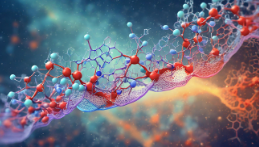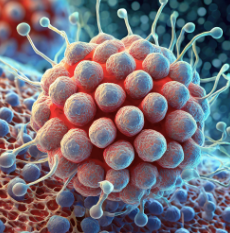Imagine a world where sugar isn’t just for sweetening your coffee, but plays a crucial role in building the very foundations of life. That’s the fascinating world of glycoconjugates, complex molecules where sugars (glycans) are attached to proteins, lipids, or nucleic acids. Often overlooked, these “sugar chains” are far from mere decorations; they’re the cellular architects, shaping interactions, communication, and even disease processes.
What are Glycoconjugates?
Think of glycoconjugates as molecular Lego bricks. The protein, lipid, or nucleic acid acts as the base, and the glycans are the colorful, diverse blocks that can be arranged in countless ways. These arrangements, called glycosylation patterns, determine the unique properties of each glycoconjugate.

Why are they important?
Glycoconjugates are like cellular ID cards, influencing how cells recognize and interact with each other. They play a vital role in:
- Cell adhesion: Imagine cells as puzzle pieces. Glycans act as interlocking tabs, allowing cells to stick together and form tissues and organs.
- Immune response: Specific glycans on pathogens are recognized by our immune system, triggering defenses. Conversely, some pathogens use glycans to disguise themselves.
- Signaling: Glycans act as cellular messengers, transmitting signals that regulate growth, differentiation, and development.
- Protein folding and stability: Glycans help proteins fold into their proper shapes and protect them from degradation.
Examples of Glycoconjugates in Action:
- Mucin: This gooey glycoprotein protects your lungs from dust and pathogens. Its specific sugar chains allow helpful bacteria to stick around, while keeping harmful ones at bay.
- Blood group antigens: These sugars on red blood cells determine your blood type. Mismatched blood types can cause dangerous immune reactions, highlighting the importance of glycan recognition.
- Selectins: These cell-adhesion molecules, rich in sugars, guide white blood cells to sites of infection. Imagine them as cellular searchlights, using glycans to find the right target.

The Future of Glycobiology:
The field of glycobiology, studying the roles of glycoconjugates, is rapidly growing. With advanced technologies, researchers are:
- Mapping glycosylation patterns: This helps us understand how different sugar arrangements affect cell function and disease. Imagine a detailed map of the cellular sugar landscape!
- Developing new drugs: By targeting specific glycans, we can potentially create drugs for diseases like cancer and autoimmune disorders.
- Engineering glycoconjugates: Scientists are even designing synthetic glycoconjugates with specific properties, opening doors for new medical applications.
Glycobiology is a dynamic field with immense potential. Understanding the world of glycoconjugates offers exciting opportunities for research and discovery. Whether you’re interested in immunology, oncology, or drug development, glycobiology has something to offer.
